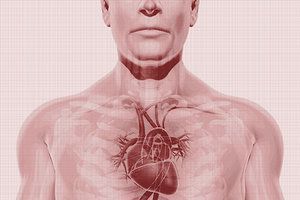Did any of you ever get the feeling in school that it simply was not OK to speak about wanting to be successful? To get into the nitty gritty details of how to make money in practice? Maybe you were even someone like me who was directly told by someone in a position of power that I needed to take what I could get because in private practice, I wouldn’t make money.
The Luo Vessels: Restoring Connectivity
When I was a novice acupuncture student my teacher suggested a seemingly radical way of working clinically. My training was highly focused on understanding the acupuncture channel systems of the body, especially the so-called "secondary vessels."
He suggested we choose a channel system and commit to working solely with that system for an extended period of time. He would often state that each acupuncture channel system is capable of treating all conditions.
To develop strong resonance with a channel system we need to learn to think in the mindset of that particular system within all clinical situations. This way of working has been perhaps my most helpful practice in developing resonance and deeper understanding of each of the five acupuncture channel systems.
Philosophy of the Channels
Different acupuncture channel systems possess specific philosophical views of the world. The Luo Vessels for example emphasize the chest as the major area of the body that needs attention. Organically, the organs of the chest, specifically the Heart and Pericardium are emphasized as the most important within this channel system. Secondarily, the Stomach and Intestines are emphasized.
To develop the capacity to think in the mindset of a particular acupuncture channel system we need to become intimately acquainted with it. Chapter 10 of the Ling Shu is the classical basis for the Luo Vessels, presenting their trajectories, progression and organ affiliations. It is a good place to start when exploring this channel system.

Each acupuncture channel system has its own order of progression. They don't all run according to the Primary Channel progression we learn in TCM school. The Luo Vessels begin with the Lung's Luo Vessel, followed by the Heart and Pericardium Vessels: the Yin vessels of the arms.
The Heart & Pericardium
Within this first unit of channels are the two Luo Vessels that travel into their associated organs: the Heart and Pericardium. None of the other Luo Vessels do this. The only other Luo Vessel that enters an organ is the Spleen's Luo which doesn't go to the Spleen, but rather to the Stomach and Intestines.
This fact emphasizes the importance of the Heart and Pericardium organs, and the chest in general when working with the Luo Vessels. The primary importance of the chest is followed by that of the abdomen. As we get to know the Luo Vessels as a channel system it becomes clear that the chest is the primary focus in treatment. The goals of the Luo Vessels are to free up the Heart, Pericardium and chest.
Understanding the Root
We can learn a lot about an acupuncture channel system by studying where it begins, and also where it ends. Chapter 5 of the Ling Shu teaches us the importance of understanding "root" and "termination." Without an understanding of beginning and end, says the Ling Shu, much clinical treatment will be ineffective or at worst harmful.
Chapter 10 says the Luo Vessels begin at the chest, Heart and Pericardium organs, travel into the arms, face/head, legs, abdomen (Stomach and intestines) and lumbar spine. The sequence of the channel system finishes again where it started, at the chest via the Great Luo of the Spleen and Stomach.
The Great Network
In commentary to the 26th Difficult Issue of the Nan Jing, the Great Luo of the Spleen is said to be that which "penetrates and links all [channels]: yin and yang, external and internal, upper and lower." This is why it is called the "Great network vessel." It is described as the mechanism that keeps all the different sections of the body in communication.
The Great Luo of the Stomach is described in Chapter 18 of the Su Wen as relating to the heart beat in general, with its pathology involving symptoms resembling heart failure. The ultimate failure of the Luo Vessels is the severing of communication within all the various systems and anatomical areas of the body, along with failure of the heart itself.
The common translation given to the Luo Vessels says a lot about this channel system: "connecting vessels." The Nan Jing says the Luo are channels that ensure free-flowing communication within the body — the ability to connect. And if we think about the philosophical role of the heart, isn't this also its spiritual role?
Restoring Connectivity
Pathology of the Luo Vessels involves disturbance in connection. To work with the Luo Vessels is an attempt to restore connectivity by focusing chiefly on the major "axis of qi" in the body: the chest. The Luo Vessels are presented in Chapter 10 after a lengthy discussion of the Primary Channels.
They are the channels that can be seen, whereas the Primary Channels are "invisible," laying "hidden in the flesh." The Luo have their own trajectories, which are described as originating from the Luo point of the Primary Channel. For example, the Lung's Luo Vessel begins at the area of LU-7 "Lieque" on the wrist, traveling into the palm and thenar eminence of the hand.
The Heart's Luo travels from HT-5 "Tongli" into the Heart organ and then into the tongue and eyes. The Pericardium Luo travels from PC-6 "Neiguan" into the Pericardium organ. If we follow the trajectories of the Luo we can see what they are trying to do.
Energetic Layers
The Lung luo appears to vent pathology from the lung channel distally into the palms: a form of energy effusion. The Heart luo travels into the Heart to bring material out to the tongue and eyes for expression: catharsis. The Pericardium Luo is where things internalize. The first sequence of the Arm Yin Luo shows how the body tries and fails in expression and release.
The remainder of the Luo: the Yang Arms and two Leg Vessel sequences continue to be about trying to displace pathology the body has failed to express and release. The Small Intestine Luo brings pathology into the shoulder region; the Large Intestine Luo into the jaw, teeth and ears. The Triple Heater Luo shows the failure of the Yang Arm Luo sequence, once again internalizing into the chest.
Each time internalization occurs, pathology transmits to a deeper energetic layer within the body.



